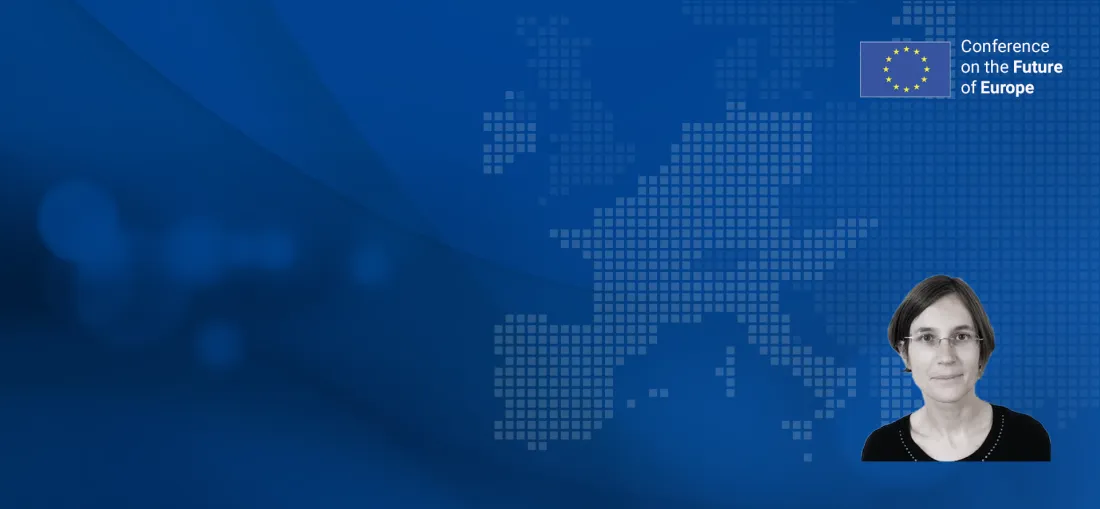EMU deepening agenda in the aftermath of COVID-19

Marion Salines, ESM Deputy Head of Strategy and Institutional Relations
Remarks at panel discussion “The EMU deepening agenda in the aftermath of the COVID-19 crisis”
ESM Future of Europe Conference: How to deepen Europe’s Economic and Monetary Union further?
Online, 24 January 2022
(Please check against delivery)
I will focus my intervention on the institutional dimension of Economic and Monetary Union governance and pick up on one of the proposals which Klaus Regling mentioned in his keynote speech.
The institutional architecture of EMU has been less discussed in the debate surrounding EMU completion but is nevertheless vital. Governance can pull together a coherent set of instruments and ensure good cooperation among institutions. It can also play an important role in ensuring that the institutional landscape is clear and transparent to citizens.
In EMU, as economic and financial affairs remain a non-exclusive competence of the European Union, governance is dual: between Member states, driving national actions, and European actors, like the European Commission, which guide the coordinated European action.
Due to the urgency to act at the beginning of the sovereign debt crisis, the ESM was created outside the EU legal framework. Under the impulse and political choice of the governments of the countries in the euro area, the ESM was given a mandate to become active in markets, preserve financial stability and support Members, as they went through their economic adjustment programmes.
This intergovernmental start is far from uncommon in European history and has been the case in several domains which are very closely tied to national sovereignty. The Schengen agreement in the area of security and justice is a case-in-point. Cooperation between European countries on this highly sensitive matter started outside the EU framework before being incorporated into EU law six years later. The so-called Fiscal Compact is another example of an initiative by EU Member States outside the EU legal order which is expected to be integrated into the EU legal framework at some point in the future.
Keeping these historical precedents in mind, I would like to explore how EMU governance might evolve, focusing in particular on the ESM.
I would first like to recall that during the response to Covid-19, two things were noteworthy from an institutional point of view. First, the very good cooperation among institutions, irrespective of their governance models. Complementary instruments were deployed on all fronts to ensure the euro area could weather the crisis. Second, the blueprints created during the previous crisis have proven to be very useful. This is notably the case of the experience and expertise accrued by the ESM when it comes to balance sheets and market activity. These have been helpful when deploying both NGEU and SURE to boost the recovery. This shows that, despite differences in institutional set-ups, the current arrangement works well in practice.
But as we emerge from the COVID-19 crisis, it is a good moment to think again about potential institutional changes to the EU governance framework. The integration of the ESM into the EU legal framework had been proposed by the Five Presidents’ report in 2015 and by the European Commission in 2017. A future reopening of the EU Treaties would be a good opportunity to implement this in a legally robust way. It would enhance the consistency and the visibility of EMU architecture for European citizens. All European institutions would be under the same roof and would cooperate under the same legal framework. The role of the European Parliament could be formalised, providing citizens with a complementary layer of accountability at EU level, in addition to the continued oversight by national parliaments.
When thinking of a possible integration of the ESM into the EU family, it might be useful to look at the European Investment Bank, a similar institution, also based in Luxembourg, which is active in markets, raises debt, and has a governance model underpinned by the strong involvement of Member States. It is already in the EU legal order, making it a very interesting blueprint.
This model would ensure the highest level of legal certainty. It would take into account the ESM’s specific needs concerning its governance and functioning, in particular the strong involvement of Member States since the ESM capital comes from national coffers. At the same time, it would also allow possible adaptations in the overall set-up depending on political preferences and the evolving needs of the euro area.
Such a step is not urgent and will not be implemented overnight since it would require a change in EU Treaties. Still, the Conference on the Future of Europe is a good opportunity to think about such potential longer-term institutional improvements of the EMU architecture.
Contacts


